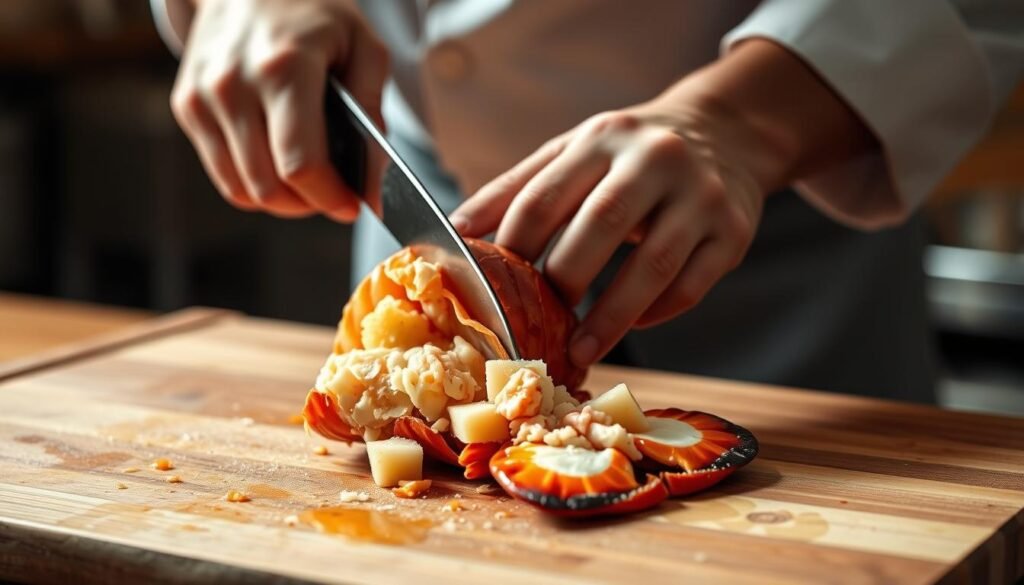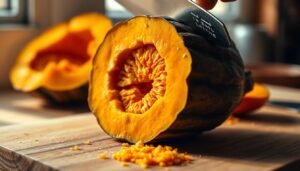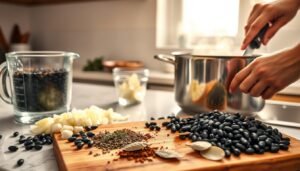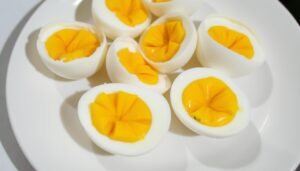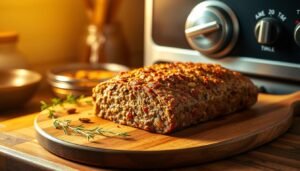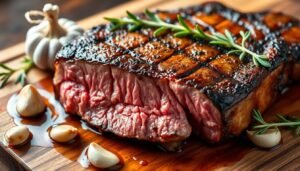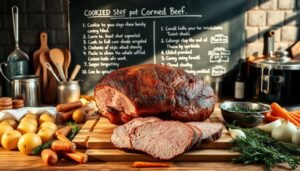Did you know Americans eat over 20 million pounds of lobster each year? This shows how much we love seafood. Cooking lobster tails can seem hard, but it’s easier than you think. I’ll show you simple ways to cook lobster tails perfectly.
From picking the freshest lobster to learning different cooking methods, I’ve got you covered. You’ll learn how to make a lobster tail dish that will wow your guests.
Key Takeaways
- Cooking lobster tails can be made easy with the right techniques.
- Understanding the difference between fresh and frozen lobster tails is crucial.
- Size matters when selecting lobster tails for your meal.
- Various cooking methods, including boiling, grilling, and baking, can enhance your dish.
- Proper seasoning can elevate the flavors of lobster significantly.
- Knowing how to check for doneness ensures a perfect result every time.
Understanding Lobster Tails
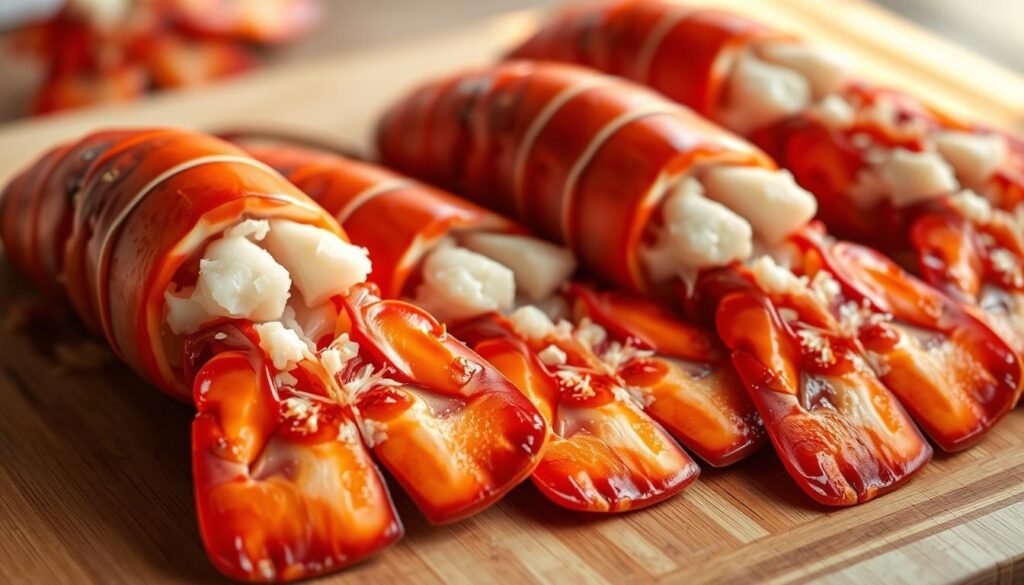
Lobster tails add elegance to any meal. They are known for their tasty and soft meat. You can find them fresh or frozen.
They come from cold-water lobsters. These lobsters have firmer meat and a sweeter taste.
What Are Lobster Tails?
The lobster tail has most of its meat. Enjoying lobster tails means savoring a rich part of the lobster. They are sold raw, pre-cooked, or frozen.
This makes them great for many dishes.
Nutritional Benefits
Lobster tail nutrition is a big plus. A 4-ounce serving has about 24 grams of protein. It has very little fat, just 1 gram of saturated fat.
They also have omega-3 fatty acids, vitamin B12, and selenium. These nutrients help keep your diet balanced.
Selecting the Right Lobster Tails
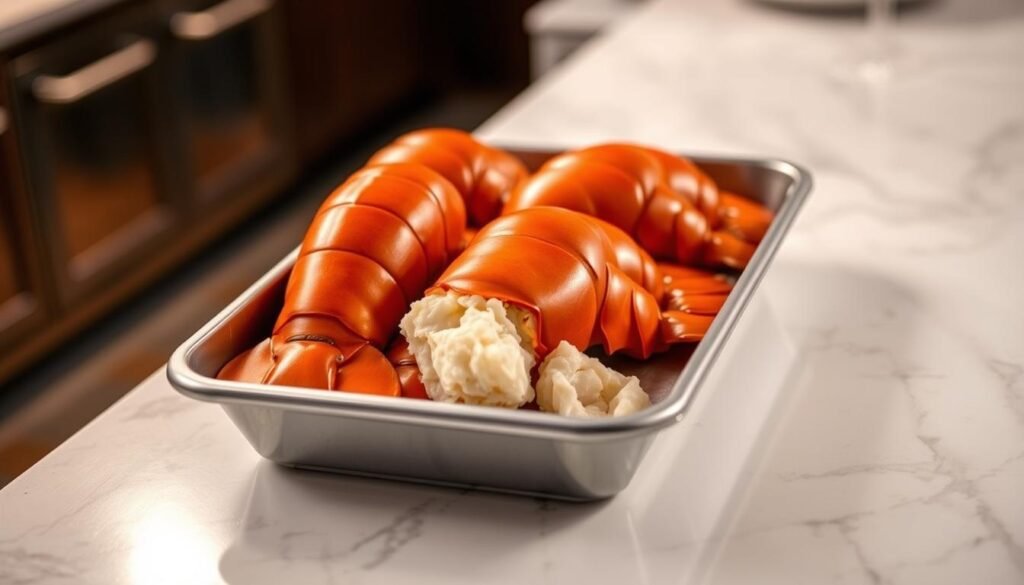
Choosing the right lobster tails can make a big difference in your cooking. You can pick between fresh lobster tails and frozen options. Each has its own benefits, depending on what you need.
Fresh vs. Frozen Options
Fresh lobster tails are known for their great taste and texture. But, they can be hard to find in some places. Frozen tails offer more convenience but still taste good if thawed right.
When choosing, look for tails that are moist and firm. Avoid any with freezer burn. Keeping them stored properly helps keep their flavor.You can see about how-to-cook-beets.
Size Matters
The size of lobster tails is key. Tails between 4 to 10 ounces cook best. Larger tails take longer to cook, which can make them tough.
Preparing Lobster Tails for Cooking
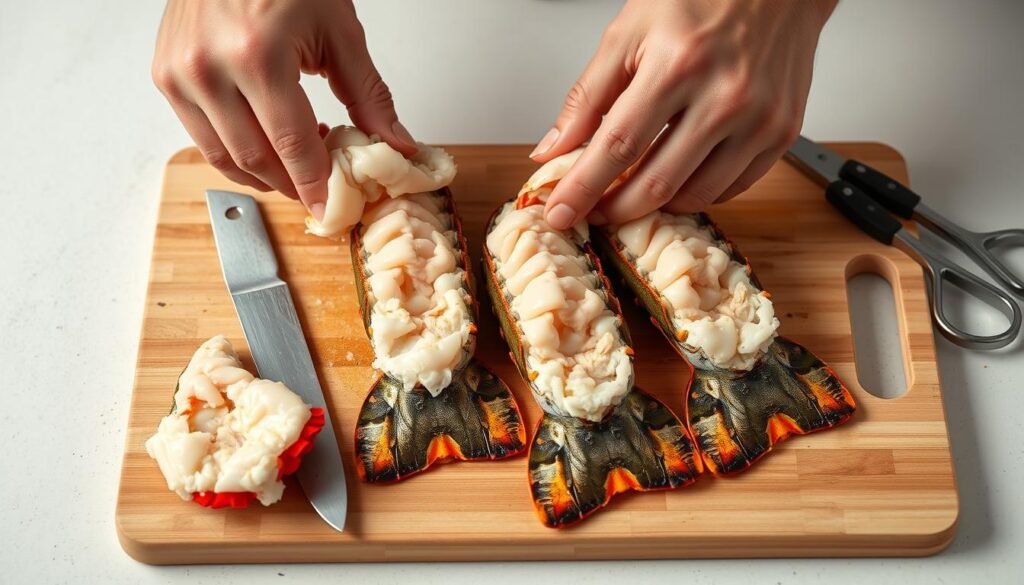
Preparing lobster tails for cooking is all about enhancing flavor and presentation. First, thawing is key, whether you have frozen tails. Then, cleaning the tails is crucial for great taste.
Thawing Frozen Lobster Tails
Thawing lobster tails can be done in two ways. The best method is to thaw them in the fridge overnight. This slow thaw ensures even cooking.
If you’re short on time, thawing in cold water works too. Just change the water halfway to keep it cold. This method takes about 30 minutes.You can see about how-to-cook-butternut-squash.
Cleaning and Cutting
After thawing, cleaning the tails is vital. I use scissors to cut the top shell, stopping before the tail fin. Then, I gently pull the shell apart to reveal the meat.
This method, called butterflying, helps the meat cook evenly. It also makes the dish look amazing on the plate.
These steps—thawing and cleaning lobster tails—are key to a great dish. Taking your time with these steps makes all the difference in the final taste.
Popular Cooking Methods for Lobster Tails

There are several ways to cook lobster tails, each with its own taste and texture. You can pick the method that suits your taste best. Let’s look at the most popular ways to cook lobster tails.
Boiling Lobster Tails
Boiling lobster tails is quick and easy. Start by boiling a large pot of salted water. Then, put the lobster tails in the boiling water for 5-10 minutes, depending on their size. This method makes the tails tender and juicy.You can see about how-to-cook-corned-beef.
Grilling Lobster Tails
Grilling lobster adds a smoky flavor that’s amazing. I butterfly the tails and grill them for 6-8 minutes. Brushing them with garlic butter while grilling adds flavor and gives a nice glaze.
Baking Lobster Tails
Baking lobster tails is another great choice. Preheat the oven to 375°F (190°C). Place the tails in a baking dish and season them well. Bake for 12-15 minutes. This method keeps the meat juicy and flavorful.
Broiling Lobster Tails
Broiling gives lobster tails a restaurant-quality finish. The heat caramelizes the top, creating a tasty crust. Place the tails on a broiler pan and cook for 6-8 minutes. This method offers a unique taste experience.
| Cooking Method | Cooking Time | Flavor Profile |
|---|---|---|
| Boiling | 5-10 minutes | Tender, natural flavor |
| Grilling | 6-8 minutes | Smoky, rich flavor |
| Baking | 12-15 minutes | Juicy, seasoned flavor |
| Broiling | 6-8 minutes | Crispy, caramelized flavor |
Flavoring and Seasoning
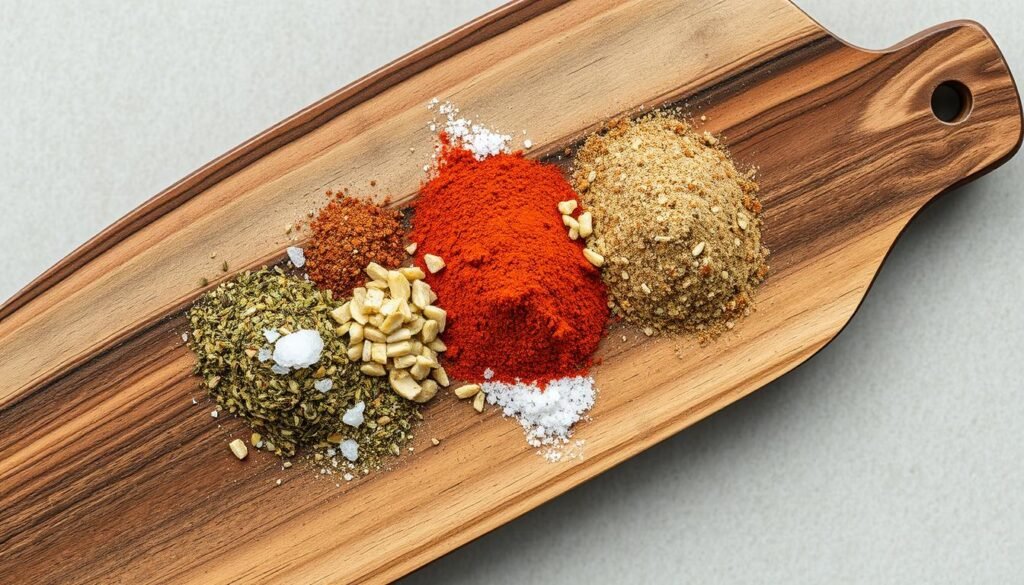
Flavoring lobster tails brings out their natural sweetness, making each bite more enjoyable. A classic choice for seasoning involves a rich garlic butter sauce. I recommend combining melted unsalted butter with crushed garlic and freshly squeezed lemon juice. Drizzling this mixture over the tails before cooking creates a mouthwatering garlic butter lobster experience.
Classic Butter and Garlic
The combination of garlic and butter serves as a timeless seasoning for lobster tails. I often take 4 tablespoons of butter, melting half of it to dot the tops of the tails. This technique not only enhances the flavor but helps create a beautiful golden crust when broiling. The remaining butter blends with pan drippings, enriching the garlic lemon butter sauce for drizzling at the end. This addition balances the richness of the lobster, ensuring every bite is succulent and full of flavor.
Unique Marinades
If I want to try something different, I opt for various marinades that elevate the flavor profile of my lobster tails. Some of my favorites include combining spices like smoked paprika and cayenne pepper, offering a delightful kick. Citrus-based marinades, featuring lime or orange juice, provide a refreshing tang that pairs beautifully with the sweetness of the lobster. For a truly unique twist, consider a marinade with ingredients such as the ones found in this garlic lemon butter sauce.
| Ingredient | Amount |
|---|---|
| Unsalted Butter | 4 Tbsp |
| Garlic Cloves | 2, pressed |
| Parsley | 1 Tbsp, chopped |
| Dijon Mustard | 1 tsp |
| Salt | 1/4 tsp |
| Pepper | 1/8 tsp |
| Olive Oil | 1 1/2 Tbsp |
| Lemon Juice | 1 1/2 Tbsp |
Every combination of ingredients highlights the depth of flavor possible with lobster tail seasoning. Whether you stick to the classic butter and garlic or venture into unique marinades, each approach will surely impress.
Cooking Lobster Tails Step by Step
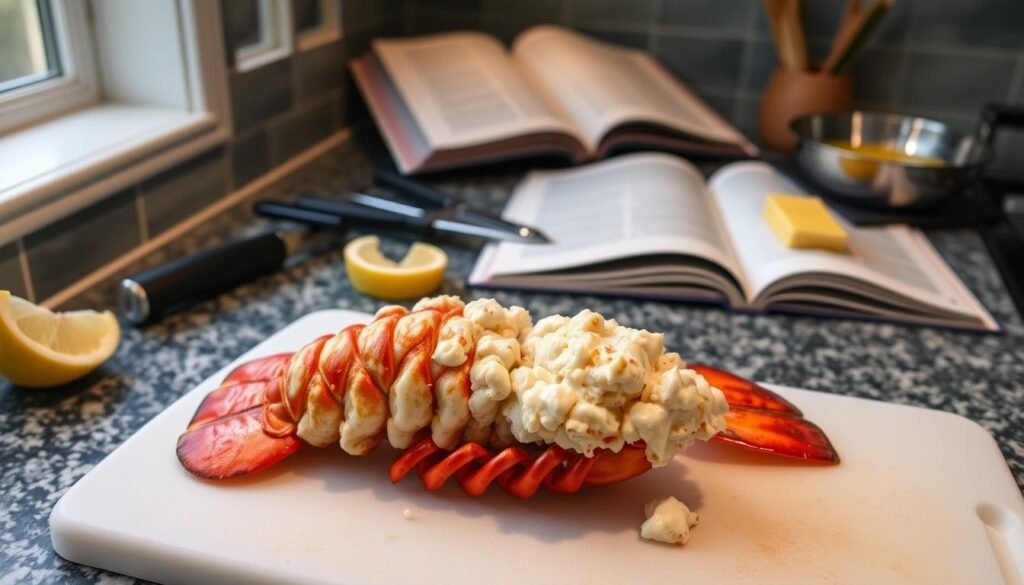
Perfectly cooked lobster tails make any meal special. Knowing how to cook them is key. I’ll guide you through boiling, grilling, and baking lobster tails. Each method adds its own flavor and texture.
Boiling Instructions
Start by boiling a large pot of water. Add lots of salt for flavor. Gently put the lobster tails in the boiling water.
Cook for 5 to 10 minutes. They’re done when the meat is white and firm. Use a thermometer to check the internal temperature, aiming for 135°F to 140°F.
Grilling Instructions
Grilling adds a smoky taste. Heat your grill to medium. Brush the lobster tails with garlic butter for extra flavor.You can see about how-long-to-cook-pork-chops-in-oven.
Grill for 6 to 8 minutes, turning halfway. Look for a golden color and check the temperature to ensure they’re cooked right.
Baking Instructions
Baking lets flavors blend well. Preheat your oven to 375°F (190°C). Put the lobster tails in a baking dish.
Add your favorite seasonings for extra taste. Bake for 12 to 15 minutes. Check the temperature to make sure it’s 135°F (57°C).
Each cooking method brings a unique taste to lobster tails. Whether boiling, grilling, or baking, these steps will help you cook them perfectly.
Checking for Doneness
Cooking lobster tails right is key for great taste and texture. It’s important to know when they’re done. This means understanding the right internal temperature and how to check it.
Ideal Internal Temperature
The perfect internal temperature for lobster tail is about 135°F (57°C). A meat thermometer helps get this right, checking the thickest part of the meat. It’s crucial not to overcook, as it makes the meat tough and less tasty.
The meat should look translucent at first but turn opaque as it cooks. This is a good sign it’s done.
How to Test for Doneness
To see if lobster tail is done, look for visual signs and feel it. The meat should be firm but still springy. Cutting into the thickest part helps check if it’s still translucent.
Methods like broiling need extra attention because they cook fast. For more tips, check out this resource on lobster cooking temperature.
Serving Suggestions
Choosing the right side dishes can make serving lobster tails even better. A mix of flavors and textures makes the meal special. I love adding vibrant salads, garlic butter asparagus, and creamy sweet potato mash. These sides bring out the lobster’s rich taste.
Pairing with Side Dishes
I like to mix classic and new side dishes with lobster. Here are some favorites:
- Drawn butter with fresh herbs like parsley or cilantro for a zesty touch.
- Roasted veggies like asparagus, Brussels sprouts, and bell peppers for color and crunch.
- Grain dishes like risotto or quinoa for a hearty contrast to the lobster.
- Light salads with mixed greens and citrus vinaigrette to refresh the taste.
For drinks, try a crisp white wine or a classic martini. These pair well with lobster tails.
Plating and Presentation
Presenting lobster tails beautifully makes the meal even more enjoyable. I often place the tails on a bed of fresh herbs or with colorful roasted veggies. This makes the dish look great and impresses guests.
To add a touch of elegance, I drizzle garlic butter around the plate. The mix of colors and flavors makes for a delightful meal.
For more ideas on what to serve with lobster tails, check out these helpful suggestions.
Storing Leftover Lobster Tails
When I have leftover lobster tails, I make sure to store them right. I put them in an airtight container in the fridge. This way, they stay fresh for up to three days.
If I won’t eat them soon, I freeze them. Freezing is a great way to keep them fresh for longer.
To freeze them, I wrap each tail in plastic wrap and then in foil. This keeps them from getting freezer burn and keeps their flavor in. When I’m ready to cook them, I thaw them completely first.
For more tips on freezing, check out this guide on best practices for lobster storage.
These simple steps help me enjoy my lobster in new recipes. Whether I choose to refrigerate or freeze, these methods ensure I get the most out of my lobster. For more ideas on using leftover lobster, see this article on leftover lobster recipes!


